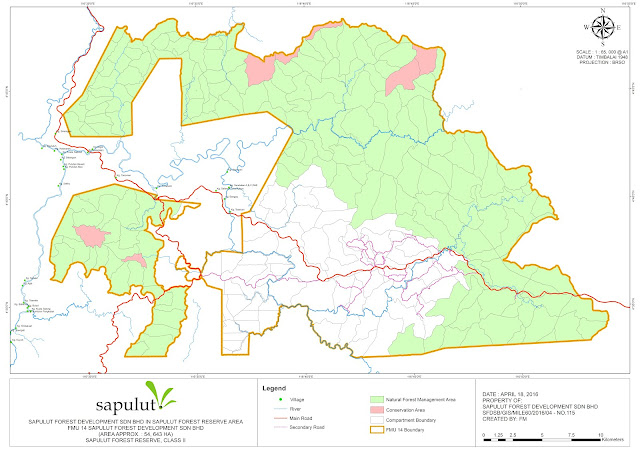 |
| Industrial Tree Plantation (ITP). |
SAPULUT : Bringing Back the Natural Forest and Managing it Sustainably.
Who are we?
Sapulut Forest Development Sdn Bhd, or fondly known as Sapulut, is a sustainable forestry company in Sapulut, located in the state of Sabah, Malaysia.
For many decades, Sabah's rain forest was logged extensively for its valuable timber. Although such uncontrolled practices have since ceased, its effect is still felt today. Many once forested regions are so badly degraded they are lost forever. As a responsible forestry company, we hope to reverse the damage. Hence, we are making it our mission, bringing back the natural forest and manage it sustainably.
We treasure the forest not only for its beautiful timbers but also as a habitat to a plethora of flora and fauna, as well as the native communities. To enhance the forests under our care, we are determined to restore parts of the degraded forest with well-thought replanting programs that includes indigenous and wildlife-friendly trees. This increases biodiversity and is the key to reviving the ecosystem to provide economic, environment and social services.
If you find our quest interesting and want to help us make a difference, we would be delighted to hear from you.
Thank you.
Sapulut Forestry Development Sdn Bhd
Friday, 6 May 2016
Forest Management Unit No.14 - Industrial Tree Plantation Management
Forest Management Unit No.14 - Natural Forest Management
 |
| Sapulut Forest Development SB (FMU 14) ; Natural Forest Management |
|
No.
|
Production
|
Gross
Area (Ha)
|
Management
Regimes
|
|
(a)
|
NFM West
|
7,957
|
Full
RIL
|
|
(b)
|
NFM East
|
9,905
|
MOSAIC
under RIL
|
|
(c)
|
NFM Central
|
34,690
|
Conventional
|
Tuesday, 26 May 2015
Socio-Economic
Forest Health and Functionality
Monday, 25 May 2015
Second (2nd) Forest Management Plan : Management Objectives
Wednesday, 22 April 2015
Social Impact Assessment (SIA) 2015
a) Positive Impacts.
i) Creation of employment opportunities.
ii) Reduction in bush fires.
iii) More disciplined land management.
b) Negative Impacts.
i) Land uses.
ii) Water use.
iii) Safety and health risks.
Of all the impacts identified,effective mitigation measures and monitoring had been plan. Monitoring the progress of each mitigation measure is included as part of the organization mitigation management plan.
Tuesday, 21 April 2015
Flora
Plant group
|
No. of
families
|
No. of taxa
|
Lycopyhtes
|
2
|
7
|
Ferns
|
6
|
12
|
Gymnosperm
|
0
|
0
|
Angiosperm
|
-
|
-
|
Monocotyledon
|
10
|
34
|
Dicotyledon
|
73
|
389
|
Total:
|
91
|
442
|